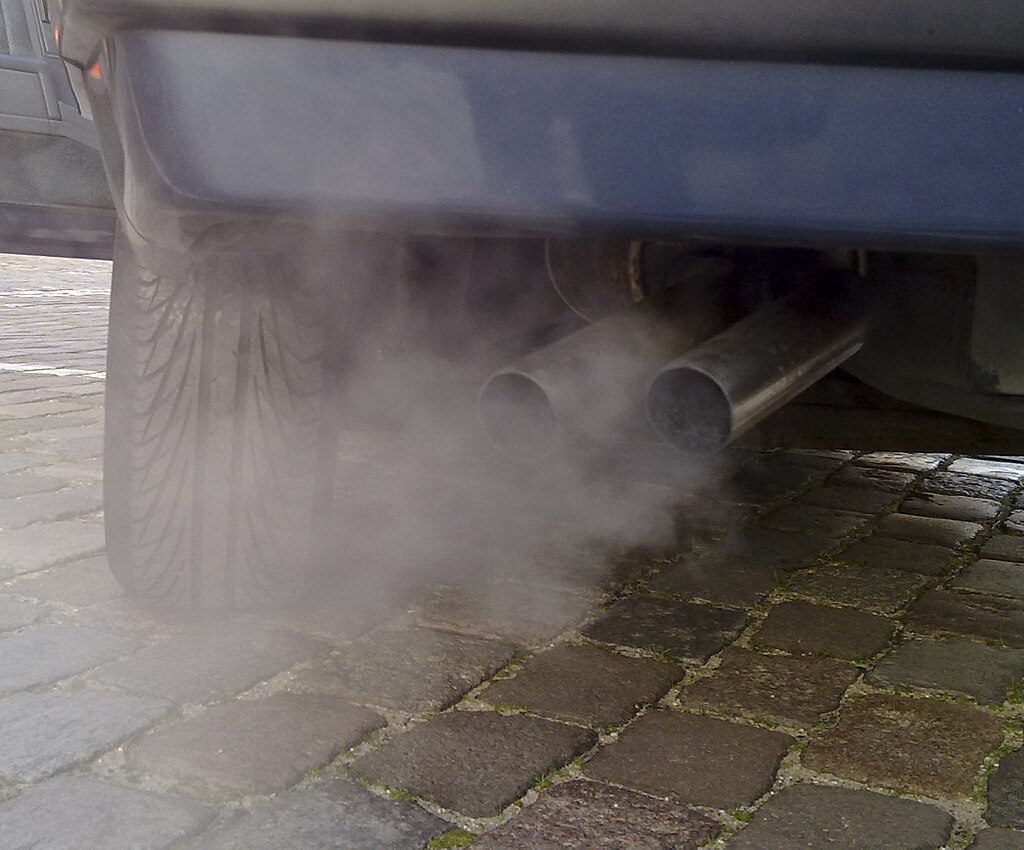Are EVs Better for People and the Planet?
The transition from gas-powered to fully electric powered transportation all across the globe will benefit the overall health of humans on the planet, as well as decrease the multiple harmful effects of global climate change, threatening all life on the planet in the long term, including humans, plants and animals.
The January 2025 wildfires in Los Angeles, California are only one example out of far too many climate change effects to count, going on right now, today, all across the globe. And these effects will only worsen unless we address climate change with solutions, one of which is EV adoption.

What Is Climate Change?
The United Nations gives a good overview of climate change and its causes. Essentially, human activities—particularly those that release greenhouse gases into the atmosphere—are significantly driving the warming of the planet. Here’s a breakdown of the key points:
Fossil Fuel Combustion: The burning of fossil fuels for energy (coal, oil, and gas) is the leading cause of carbon dioxide emissions, which are a major driver of global warming. This occurs in various sectors like energy production, transportation, and industry.
Deforestation: Cutting down forests and clearing land also contributes to climate change. Trees act as carbon sinks, meaning they absorb carbon dioxide from the atmosphere. When forests are destroyed, that carbon is released, further amplifying the greenhouse effect.
Agriculture: Farming, especially livestock production, releases methane, a potent greenhouse gas. Agriculture also contributes through activities like rice cultivation, fertilizer use, and land clearing.
Methane Emissions: Methane, although present in smaller quantities than carbon dioxide, has a much greater warming potential. It is released during oil and gas extraction, livestock farming, and waste decomposition.
These human-induced activities are shifting natural climate patterns, leading to rising global temperatures, more extreme weather events, increased wildfire danger due to dry conditions, and other environmental impacts. Addressing these causes is crucial in mitigating climate change and avoiding its most severe consequences.
Switching from fossil fuel powered transportation to fully electric will address the transportation sector’s climate change issue. USA Facts reported that in 2021, US transportation released more greenhouse gas emissions than any other sector, more than 1.8 billion metric tons of CO2 equivalent emissions, or 28.5% of emissions overall.
The earth’s temperature is rising, as the evidence of that is very obvious. Such shifts can be natural, due to changes in the sun’s activity or volcanic eruptions, however the evidence that human activity causes the climate change that we are experiencing today is undeniable. To deny that humans are causing climate change is getting in the way of governments and private industry working towards climate change solutions, such as EV adoption.
2024 Was Hottest Year So Far, Says NASA
The United States National Aeronautics and Space Administration (NASA) released news on January 10, 2025, that 2024 was the warmest year on record, since the US first began measuring global temperatures.

The record-breaking temperature in 2024 is a clear indicator of the ongoing trend of global warming, further accelerating the impacts of climate change. With global temperatures 2.30°F (1.28°C) above the 20th-century baseline, this surpasses the previous record set in 2023. The 15-month streak of consecutive temperature records, from June 2023 to August 2024, highlights the growing intensity of global heat, marking an unprecedented period of elevated temperatures.
“Once again, the temperature record has been shattered — 2024 was the hottest year since record keeping began in 1880,” said NASA Administrator Bill Nelson. “Between record breaking temperatures and wildfires currently threatening our centers and workforce in California, it has never been more important to understand our changing planet.”
Sustained High Temperatures Have Profound Implications
Increased Heatwaves: Prolonged periods of excessive heat can exacerbate health risks, including heat strokes and dehydration, particularly in vulnerable populations.
Extreme Weather: Warmer global temperatures contribute to more frequent and severe weather events, such as increased wildfire danger, intense storms, hurricanes, and floods, which can lead to widespread devastation.
Environmental Disruption: The warming contributes to disruptions in ecosystems, including changes in wildlife migration patterns, coral reef bleaching, and habitat loss, threatening biodiversity.
Melting Ice Caps and Rising Sea Levels: As global temperatures continue to rise, polar ice melts at an accelerated pace, contributing to rising sea levels, which threatens coastal communities and ecosystems.
The Paris Agreement is Crucial, The US Must Continue to Participate
This unprecedented streak of heat underscores the critical need for urgent action to mitigate climate change, including reducing greenhouse gas emissions and transitioning to cleaner, renewable energy sources and electric vehicles. It also calls for enhanced adaptation strategies to deal with the ongoing impacts, and one of the most important global strategies is the Paris agreement.
“The Paris Agreement on climate change sets forth efforts to remain below 1.5 degrees Celsius over the long term. To put that in perspective, temperatures during the warm periods on Earth three million years ago — when sea levels were dozens of feet higher than today — were only around 3 degrees Celsius warmer than pre-industrial levels,” said Gavin Schmidt, director of NASA’s Goddard Institute for Space Studies (GISS) in New York. “We are halfway to Pliocene-level warmth in just 150 years.”
The President-elect has called climate change a “hoax,” and removed the US from the Paris agreement in his previous term. President Biden wisely re-joined the agreement during his term. It is vital that the US stay a part of the Paris agreement. EVinfo.net urges you to reach out to your government representatives, and demand that the US stay a part of the Paris agreement.

EV Batteries Hurt the Environment, but EVs Still Beat Gas Cars
On May 9, 2024, NPR reported the reasons why EVs are more eco-friendly than gas cars. When one looks at the climate impact of building and using a vehicle, called a “lifecycle analysis” – study after study has found a clear benefit to EVs. The size of the benefit varies by vehicle, the source of the electricity it runs on, and a host of other factors, but the overall trend is obvious that EVs are better for people and the planet than gas vehicles.
Frequently, EV critics claim that because of the environmentally harmful mining process, EVs are worse for the environment than gas vehicles. The critics also bring up human rights abuses going on in the mining industry.
While electric vehicles (EVs) are often called “zero-emission vehicles” due to their lack of tailpipe emissions, the production and lifecycle of their batteries can have significant environmental impacts. The key points to consider are the following:
Battery Production: Manufacturing EV batteries, especially the lithium-ion type commonly used in electric cars, requires substantial amounts of energy. The extraction and processing of raw materials like lithium, cobalt, and nickel also involve environmentally harmful practices, including habitat destruction and pollution.
Energy Sources for Battery Manufacturing: The energy used in battery production is often not entirely “clean.” In many regions, electricity for manufacturing comes from fossil fuel-powered plants, contributing to emissions even before the car is driven.
Mining Impacts: The mining of raw materials for EV batteries can lead to soil and water contamination, as well as negative effects on local ecosystems and communities. For instance, mining for cobalt, often done in countries with less stringent environmental regulations, can result in significant ecological and human rights issues.
End-of-Life Concerns: While EV batteries can last for many years, their disposal or recycling at the end of life can also pose environmental challenges. Although recycling rates for batteries are improving, it remains a significant issue to handle large quantities of used batteries.
That being said, despite the environmental impact of battery production, EVs still have a far lower overall carbon footprint compared to conventional gasoline-powered cars, especially when they’re powered by renewable energy sources. Over time, as battery technology improves and cleaner energy sources for manufacturing become more widespread, the environmental footprint of electric vehicles will decrease.
Ultimately, EVs represent a step in the right direction toward reducing emissions, but addressing the full environmental impact of their production and disposal is key to making them truly sustainable.
Thea Riofrancos, a political scientist, says drivers weighing an EV versus a gas-powered car needs to think carefully about the cost of relying on fossil fuels for transportation, compared to mining EV batteries.
“A traditional car needs mining every day, needs mining every time it’s used. It needs the whole extraction complex of fossil fuels in order to power it,” said Riofrancos.
New Technology and Better Practices Are Reducing EVs’ Carbon Footprint
There are several ways that the manufacturing and lifecycle of electric vehicles (EVs) is becoming more sustainable, and these developments are happening today as the industry evolves. Below is a closer look at the strategies that are making EV production cleaner.
Cleaner Mining Practices: A shift in mining practices, particularly moving toward regions with stricter environmental regulations, could significantly reduce the environmental harm caused by resource extraction. For instance, mining in places like the U.S. or Canada, where regulations are often more stringent, could lower the ecological impact compared to mining in regions like parts of the Democratic Republic of the Congo, where environmental protections may be weaker.
Direct Lithium Extraction and Increased EV use in Mining: Technologies like direct lithium extraction (DLE) are emerging as ways to reduce the environmental footprint of mining for lithium. Unlike traditional methods that require massive amounts of water and can result in ecosystem damage, DLE methods can produce lithium with much lower water use and land disturbance. If these technologies scale, they could make lithium production far more sustainable. Mining vehicles and equipment are increasingly becoming electrified.
Ethical Sourcing and Supply Chain Transparency: Organizations like Lead the Charge are playing an important role in evaluating automakers on how they source their materials and the ethics behind their supply chains. For example, if automakers choose to use materials that are mined with better labor practices and in environmentally responsible ways, this would reduce the overall harmful impacts of battery production. Consumer awareness and public pressure can push companies to prioritize these ethical sourcing practices.
Cobalt-Free Batteries (LFP): Batteries without cobalt, such as lithium iron phosphate (LFP) batteries, are becoming more common. These batteries are not only free from cobalt, which is often associated with unethical mining practices, but also tend to be safer, more stable, and cheaper. The Ford Mach-E, for example, uses LFP batteries in certain models. With a growing shift toward these types of batteries, automakers can avoid some of the human and environmental costs associated with cobalt mining.
Alternative Battery Technologies: Looking further into the future, batteries based on sodium instead of lithium may offer a promising alternative. Sodium is far more abundant and cheaper than lithium, and sodium-ion batteries could be a more sustainable option if they can be scaled for EV use. This could reduce the demand for lithium and lessen the environmental impact of battery production.
Battery Recycling: One of the most promising areas for reducing the environmental impact of EVs is battery recycling. Companies like Redwood Materials are leading efforts to build large-scale recycling infrastructures for EV batteries in the U.S. While it’s true that recycling won’t fully reduce mining needs until more EVs reach the end of their lifespans, it holds great potential for the future. Over time, the recycled materials from old batteries—like lithium, nickel, and cobalt—could be reused in new batteries, reducing the need for mining and making EVs more sustainable over multiple generations. In addition, recycling can help mitigate the environmental risks posed by improper disposal of batteries.
As EV technologies evolve, there’s a growing focus on reducing the negative environmental impacts of battery production through cleaner mining practices, ethical sourcing, new technologies, and improved recycling efforts. With these changes, the overall footprint of electric vehicles can be reduced, making them a more sustainable choice for the future compared to fossil fuel-powered vehicles.

The American Lung Association (ALA) Says EVs Are Better for Human Health
The American Lung Association (ALA) highlighted that electric vehicles (EVs) are better for human health, primarily because they contribute to reducing air pollution, summarized below.
Reduction in Air Pollutants: One of the major health benefits of EVs is the significant reduction in air pollutants like nitrogen oxides (NOx), particulate matter (PM), and volatile organic compounds (VOCs), which are commonly emitted by traditional gasoline and diesel vehicles. These pollutants are linked to various respiratory and cardiovascular diseases, including asthma, bronchitis, heart attacks, and strokes. EVs, being powered by electricity rather than burning fossil fuels, produce zero tailpipe emissions, which can dramatically improve air quality, particularly in urban areas with high traffic congestion.
Cleaner Air = Better Health: According to the ALA, switching to EVs can improve air quality in cities, which is crucial for reducing the public health burden caused by pollution. Studies have shown that people living in areas with high levels of vehicle emissions are at a greater risk for respiratory illnesses, especially children and older adults. By transitioning to EVs, these health risks can be significantly reduced, leading to fewer hospital visits, less medication use, and improved overall health.
Climate and Health Benefits: EVs also play an important role in mitigating climate change, which in turn has health benefits. Reducing greenhouse gas emissions, which contribute to global warming, can help prevent the health-related consequences of climate change, such as extreme heatwaves, poor air quality, and the spread of infectious diseases.
Public Health Costs: The ALA reports that air pollution from transportation causes billions of dollars in healthcare costs each year in the U.S. By switching to cleaner transportation options like EVs, we can reduce these costs while improving public health. This includes fewer cases of lung disease, heart disease, and other health issues related to air pollution.
Overall, the American Lung Association supports the transition to EVs not just for their environmental benefits but for their significant potential to improve human health by reducing air pollution and its associated health risks. While many EVs continue today to be powered by other health-harming energy sources such as coal for the electricity to charge their batteries, the meteoric rise of renewable energy is solving this problem.
Join EVinfo.net in the Fight for a Better Planet
All of the evidence as of today is very clear, that EVs are far better for the planet and its people than gas powered vehicles. Join EVinfo.net in promoting EV adoption, for a better, cleaner, healthier planet.

Electric Vehicle Marketing Consultant, Writer and Editor. Publisher EVinfo.net.
Services